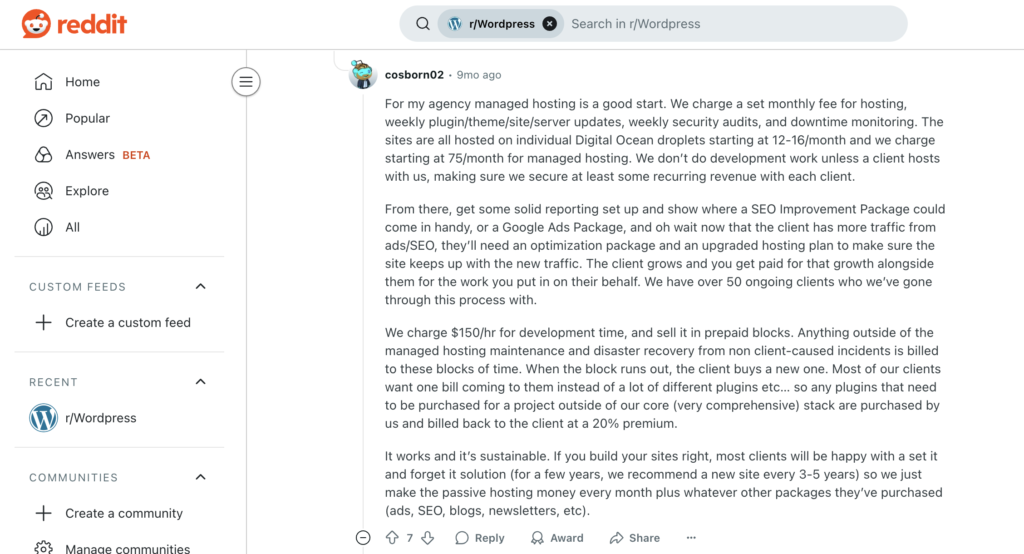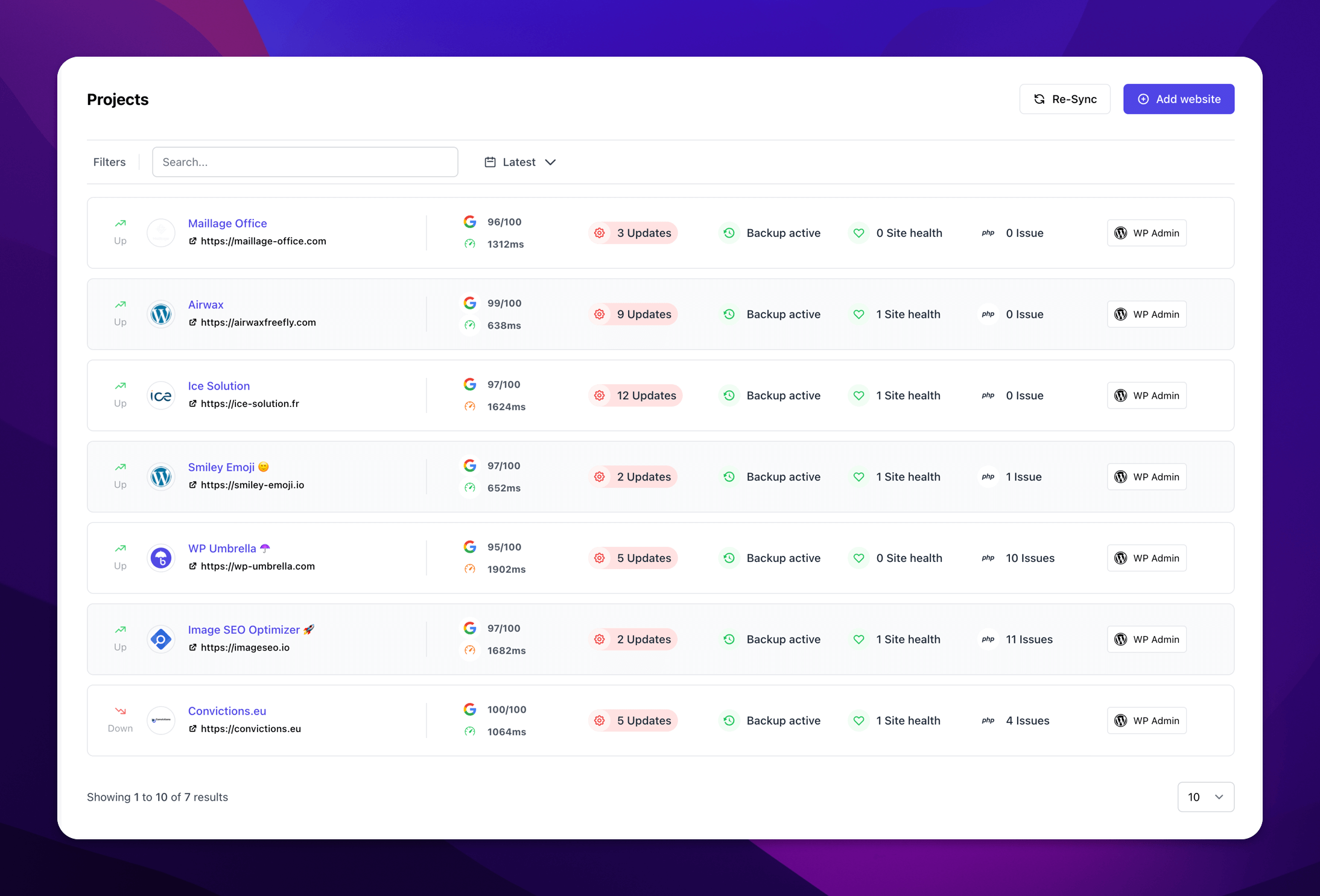How WordPress Agencies Can Win Clients and Scale Without Burning Out

Every agency hits the same wall at some point. You take on whatever project comes your way in the early days, jump at every opportunity, and wonder where the next client will come from.
If you run a WordPress agency or work as a solopreneur, that cycle probably feels familiar. Too often, you end up chasing gigs that pay too little, demand too much, and leave you burned out with very little to show for it.
That’s why it’s worth stepping back and looking at what works. This article brings together practical, no-fluff lessons from people who’ve been there.
How WordPress Agencies Can Win Clients
1. Stop Racing to the Bottom on Pricing

When you’re starting out, it’s tempting to drop your rates to win the client. That might feel like the quickest way to grow, but it usually backfires. Cheap projects tend to come with unrealistic demands and tight deadlines, leaving you exhausted for little return.
Agencies that thrive do the opposite. According to sources, WordPress agency charges range from $3,000 to $100,000, depending on the project’s complexity.
WordPress agencies charge rates that reflect the value they provide. They charge for the time spent writing code or fixing bugs, as well as for the experience they bring to the table. That shift in pricing helps attract clients who appreciate your expertise and are willing to pay for it.
If you need proof, look at the agencies that raised their prices after their first few years. They started working with better clients and delivering better work simply because they weren’t constantly trying to stretch every hour to the breaking point. It’s one of the easiest ways to change the kind of client you attract and to build a business that doesn’t leave you burned out.
Related: How much to charge for a WordPress website
2. Offer Strategy and Real Value Beyond a WordPress Install

Anyone can put together a decent WordPress site. What keeps clients coming back is when you help them do more than “get it live.” Agencies that retain clients after launch tend to excel in a few key areas.
These could be as straightforward as hosting their site and ensuring updates don’t break anything. Or, it could be as hands-on as answering their questions before they even ask, like sending them a quick report each month. Most clients appreciate knowing someone’s looking after their site. They’re not interested in the technical details; they just want to know you have it handled.
Tools like WP Umbrella make a real difference. Instead of wasting time manually checking updates or writing reports from scratch, you can set up automated maintenance reports that go straight to the client on schedule. These reports keep the conversation going and lead to follow-up work or opportunities.
It’s this the value most clients never see when they sign the contract. But once you put that kind of care into the relationship, they stop looking at you as someone they hired once and start seeing you as someone they can call for anything that comes up.
Ready to boost your productivity, impress your clients and grow your WordPress agency?
Install WP Umbrella on your websites in a minute and discover a new way to manage multiple WordPress sites.
Get Started for free
3. Say No to Bad-Fit Clients Early
There’s a quiet power in telling a prospect you’re not the right fit. Agencies often feel pressure to say yes to every project that comes along, especially when they need the work. But not every client is going to value your process, your rates, or the way you work, and the sooner you recognize that, the better.
Successful agencies make qualifying new clients part of their sales process. They listen carefully, they’re upfront about timelines and budgets, and they don’t hesitate to highlight potential dealbreakers before things go too far. That might mean turning away a client who expects a quick-and-cheap job or stepping back when someone’s expectations don’t align with reality.
That kind of honesty can feel risky at first, but it saves you from draining engagements that never had a chance to go well. And it frees up your time and energy for clients who respect your expertise and give you the space to do great work.
4. Build Recurring Revenue into Every Project

Did you know that for every $1 million spent on customer acquisition costs, an additional $100,000 in monthly recurring revenue is generated? Yes, that’s why agencies that last long term nearly always focus on recurring revenue.
For a WordPress agency, this often involves ongoing WordPress maintenance, hosting, security, or optimization. Every new client becomes an opportunity to offer these services as part of the package. It’s not just upselling. It’s making sure their site stays in good shape after it’s launched, and you’re compensated for that value.
More than anything, the shift from one-and-done to ongoing support is what gives you breathing room. It smooths out the lean months, frees up time to focus on the kind of work you enjoy, and stops you from feeling like you’re forever starting over.
5. Lean on Referrals and Personal Connections
Some of the most stable agencies never have to hunt for new business. That’s because most of their work comes through word of mouth — past clients who pass their name along or other agencies who send overflow projects their way.
That kind of trust is built by delivering solid work and being someone clients enjoy working with. Every time you answer an email quickly, hit a deadline, or go the extra mile, you’re investing in relationships that pay off long after the project ends.
You can also look for natural partnerships in the WordPress ecosystem. Hosting companies often need a trusted team to pass clients to, and other agencies may appreciate someone they can rely on for specialized tasks, such as migrations or ongoing maintenance. These relationships grow slowly, but they can give you a steady pipeline of work that doesn’t depend on cold pitches or expensive ads.
How WordPress Agencies Can Scale with Better Processes
1. Make Onboarding and Support Less of a Hassle
Onboarding new clients and resolving issues can take up more time than most agencies are willing to admit. Agencies that streamline this part of the process free up serious bandwidth.
That can mean setting up staging sites early so clients can see progress and give feedback before anything goes live. It can also mean using simple project tools and video calls to keep everyone in the loop and ensuring there’s a clear, quick way to report problems.
When these habits become part of your process, they take the pain out of back-and-forths and make the client feel more involved.
2. Templatize Routine Work
After building a handful of sites, you’ll notice patterns—same theme setup, same caching approach, same security tweaks. Agencies that work at scale keep a few starter configurations ready, including a baseline theme they trust, a short list of go‑to plugins they know inside out, and a stable configuration they can spin up quickly. Some even keep a couple of variations on hand so they can match the client’s hosting or niche without extra fiddling.
This baseline also keeps surprises to a minimum. When you’re working with something that’s already been tested and works in the real world, there’s less to troubleshoot later. You can put that saved time into the part the client notices, including better design, better features, and smoother launch.
3. Test Changes Away From Live Sites
No one wants to be the reason a client’s site goes down on a Friday afternoon. Agencies that keep their sanity make sure they’re not pushing updates straight into production. They set up a staging environment and do the trial-and-error work there first. Whether it’s a WordPress core update, a new plugin, or a small design tweak, it’s a lot easier to catch the bugs before they’re visible to the public.
That extra step pays off every time. You can test updates properly without a client hovering or their customers tripping over a glitch. Once you’re sure everything holds up, moving those changes to the live site is a quick, predictable job, and you don’t spend your weekend fixing something that could have been caught days earlier.
4. Let Automation Do the Routine Work
There are only so many hours in the day, and most agencies would rather focus on client projects than on routine upkeep. Scheduled backups, bulk plugins, theme updates, and security scans — once those jobs are automated, they stop eating into your time.
Plugins like WP Umbrella simplify the process. Agencies use it to schedule backups across all their sites, run updates in one go, and send clients clear maintenance reports without having to do it manually every week. It keeps the background work off your to-do list, so you can allocate that time to things that can move the needle.
5. Sell Websites Faster with WaaS
A lot of agencies stick to one-off builds because that’s the usual path. However, there’s another model that changes the game entirely — the Website as a Service (WaaS) model. Instead of just delivering a site and moving on, you package up the whole thing: hosting, updates, security, and even minor changes. Clients pay a simple subscription, and you take care of the rest.
That approach smooths out the ups and downs between projects. It gives you recurring income each month and keeps you close enough to the client that they call you first when they want to grow. Agencies that adopt this often build up a steady client base faster because they make it easy for clients to say yes — no big upfront cost and someone looking after their site long term.
Conclusion
Growing a WordPress agency isn’t about landing one-off gigs as quickly as possible. It’s about setting things up so your clients stick around and trust you enough to come back with their next problem. That takes more than decent code — it takes honest conversations up front, knowing when to say no, and doing the quiet work that keeps their sites running smoothly long after you’ve wrapped the project.
None of this is flashy. However, it’s what separates the agencies that scramble for new work every month from those that have a stable base of clients who appreciate what they do. When you focus on real value instead of quick wins, the business follows — and so do the kinds of clients you want to work with.
Frequently Asked Questions
Yes. Even a handful of small, steady retainers can cover your basic costs and smooth out the ups and downs between larger projects. It also keeps you connected to clients long after a build is done.
That’s fine, just let them know what happens after the launch. Explain the risks of leaving a site without maintenance and give them the option to stay covered with a basic plan.
Most don’t care about every technical detail, but they do appreciate knowing someone’s monitoring their websites. A short report that lists updates and security checks goes a long way toward maintaining that trust.
